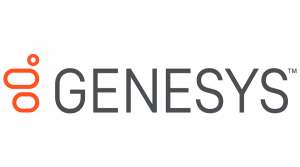The government contact center has always been a demanding operational environment, but it is more challenging than ever these days.
Given both the critical nature of the work and the sheer volume of activity, these centers have little tolerance for downtime or performance problems. Increasingly, however, they face growing expectations from the public, who see the rich customer experience (CX) they receive in the private sector as the new norm.
These days, customers expect to have a range of options available for accessing information and services, including voice, email, chat and self-service apps – and they want a smooth transition from one channel to the next. That’s the goal of thinking in terms of a customer journey.
Unfortunately, many agencies find themselves trying to support this omnichannel customer journey using a mishmash of point solutions that don’t integrate easily.
“You can have people within agencies who want to give this awesome customer journey, but when you have a kind of spaghetti infrastructure, it is almost impossible,” said Bobbi Chester, Senior Director of Cloud Product Marketing at Genesys, a company that provides cloud and on-premise CX solutions for contact centers.
But that omnichannel customer experience doesn’t have to be out of reach. By deploying CX solutions in the cloud, agencies can get out of the business of maintaining that infrastructure and instead focus on improving the customer journey.
While people often think about CX in terms of the front-end applications, it all depends on getting the back-end architecture right.
Let’s say a person begins interacting with an agency via a self-service app but runs into difficulty and needs to speak with a customer service representative. That rep should have immediate access to information about earlier transactions so that the customer does not need to go back to square one. A cloud-based, integrated solution makes it possible to ensure a seamless flow of information and services from channel to channel.
The cloud also brings a whole new approach to delivering those services.
From an administrator’s perspective, a cloud-based solution both simplifies and accelerates the deployment of new services. In the past, deploying a major new software release typically meant buying and installing new hardware. Because of the effort involved, organizations often were in no rush to add new capabilities.
With cloud-based CX, the industry has shifted to a continuous deployment model, releasing new capabilities in small, frequent increments. Contact centers no longer need to worry about revamping their infrastructure; they just need to vet the upgrade, train staff on the changes and click to enable the services.
“It used to be that on the call center operations side, as new capabilities became available it was always a question of, ‘When can I have it?’” Chester said. “Cloud has shifted that question to, ‘I will simply start consuming it.’”
Agencies need to think this way because their customers do. Traditionally, most people did not expect government agencies to deliver good customer service, but that’s no longer the case, Chester said. “They are not giving the government a pass.”
Takeaway: Transitioning to a cloud-based CX solution is how agencies will reap big rewards in terms of more efficient operations, easier management and better CX.
This article is an excerpt from GovLoop’s recent guide, “The Top Government Innovations of 2019.” Download the full guide here.





Leave a Reply
You must be logged in to post a comment.